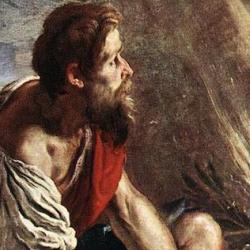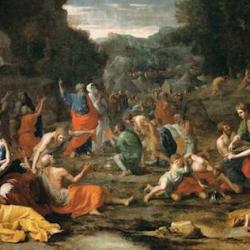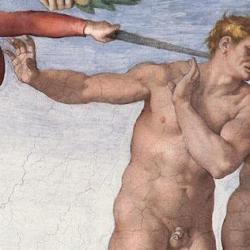In her Jacob’s Tears: The Priestly Work of Reconciliation , Mary Douglas summarizes her argument (from In the Wilderness: The Doctrine of Defilement in the Book of Numbers (Journal for the Study of the Old Testament. Supplement Series, 158)
) that the book of Numbers is a ring construction and has to be read not sequentially but in terms of the parallels of different sections: “The book is highly structured and has to be read strictly according to its literary form. Just try the synoptic reading, not linear from one sentence to the next, but across the matching sections of text. It is like reading a sonnet where the rhyming and metre carry the beginning forward to the end. The quick jumps across the text make sense together, the sense of disorder fades away; a highly organized book with a new set of meanings emerges.”
Read this way, Numbers is about two main themes: the priesthood of Aaron and the brotherhood of Israel. It matches and reverses the stories of sibling rivalry that crowd Genesis. This is highlighted by the repeated lists of the twelve tribes. There are seven of them, and though the names on the lists differ, there are always twelve tribes. The lists are:
1. 1:1-44: First census
2. 2: Twelve tribes encamped around the tabernacle
3. 7:12-84: Offerings of the tabernacle from the leaders ofthe tribe
4. 10:14-28: Twelve tribes set out in marching order
5. 13:1-16: Each of the tribes sends a spy into the land
6. 26:1-62 Second census
7. 34:16-29: On the plains of Moab, given land
Moving past Douglas now: That there are seven lists suggests possible links to the days of creation, and that works in various ways. The numbers of the original census are astronomically significant – Israel is a people of light. In the second list, Israel surrounds the throne of God like a rainbow in the firmament. In the third list, tribute is offered, including tribute of grain, a third-day creation. Marching troops in the fourth list are the “hosts of heaven” in procession. The final list promises rest in the land.
The sixth list is particularly intriguing. It seems to correspond simply to the first census, but as James Jordan has pointed out something is different. In the initial list, no daughters or women are mentioned (the word “daughter” doesn’t appear until chapter 18). In the second census, though, the daughters of Zelophehad appear (26:33), as does the “daughter of Asher” whos name is Serah (26:46). In the genealogy of the Levites (26:57-52), both Jochebed and Miriam are mentioned. The following chapter focuses on the inheritance of the daughters of Zelophehad.
In short, Israel enters the wilderness as an Adamic people; through the trials of the wilderness, they are cut in pieces and die, and rise again as an Adam-and-Eve Israel. And the “creation of Eve” is given to us in the sixth list, corresponding to the sixth day of creation. Through the wilderness, Israel anticipates the history of humanity, which is a maturation and glorification from Adam to Eve, from Adam to Bride.















